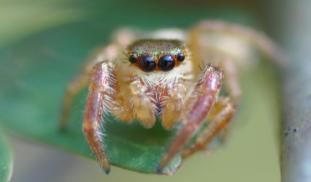Please wait...
About This Project
The spider Bagheera kiplingi is 90% vegetarian in Mexico, and 60% vegetarian in Costa Rica. I will test if population density causes this difference by documenting population density of spiders in both countries and artificially increasing the number of spiders per plant in Costa Rica to compare with results in Mexico. In Panama, I will video record and collect samples of Frigga crocuta, which exhibits similar habits to B. kiplingi and might also be vegetarian.

Browse Other Projects on Experiment
Related Projects
Using eDNA to examine protected California species in streams at Hastings Reserve
Hastings Reserve is home to three streams that provide critical habitat for sensitive native species. Through...
City smart: Are cities making birds smarter?
One cannot go to Florida and miss the White Ibises roaming golf, park and private lawns. But how does a...
How do polar bears stay healthy on the world's worst diet?
Polar bears survive almost entirely on seal fat. Yet unlike humans who eat high-fat diets, polar bears never...



